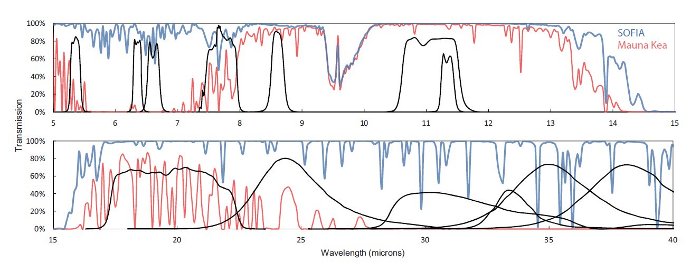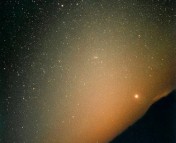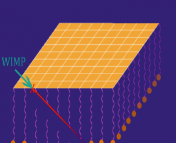Title: First Science Observations with SOFIA/FORCAST: The FORCAST Mid-infrared Camera
Authors: T. L. Herter et al.
First Author Institution: Astronomy Department, Cornell University
Infrared wavelengths cover a ton of interesting astronomy: objects ranging from cool stars to interstellar molecules emit in between the visible and submillimeter. Unfortunately, water vapor in the Earth’s atmosphere absorbs in many infrared bands. The best solution would be to go to space (see Spitzer and Herschel), but launching satellites is extremely expensive! A cheaper way to get above most of the atmosphere is to mount a telescope on an airplane and observe from the stratosphere, above the majority of the attenuating water vapor.
So that’s exactly what NASA and the German Aerospace Center did: building on experience from the older Kuiper Airborne Observatory, a Boeing 747SP was converted to the Stratospheric Observatory for Infrared Astronomy (SOFIA). The telescope achieved first light in May 2010 and has been observing since. There are three main instruments on the telescope: FLITECAM for the near-infrared, FORCAST for the mid-infrared, and HAWC for the far-infrared. This paper describes the design and performance of FORCAST.
SOFIA
Question: How do you cut a hole in a plane, stick in a telescope, and make sure it flies?
Answer: Very carefully.
The SOFIA Observatory is housed in a Boeing 747SP (a shortened version of the 747 modified for long-range flights). It flew with Pan Am colors from 1977 to 1986, and then for United until 1995. NASA bought the plane in 1997 and started modifying it for observatory status. Finally in 2007, the plane first flew post-modification. The telescope door was fully opened in 2009 and it achieved first light in 2010. Based at NASA’s Dryden facility in Palmdale, CA, SOFIA will fly 3-4 nights per week for 7-9 hours at a time for the next 20 years. Cruising at 450 knots and 41,000 feet, the telescope is above 99.8% of the Earth’s atmospheric water vapor.
The telescope itself is a 2.5-meter Cassegrain reflector with a Nasmyth focus (Figure 1). In addition to the three imaging cameras covering the infrared band, five spectrometers are also attached to the telescope. Finally, there is an interchangeable instrument slot that can be replaced every mission for more specialized science goals. Due to the turbulence expected when you open a gaping hole in an aircraft at Mach 0.8 (Figure 2), the telescope and mount were carefully designed to counteract vibrations from all sources and maintain pointing stability of 1 arcsecond.

Figure 2: The telescope door open. A hole this big in any other aircraft would be cause for concern.
The FORCAST Camera
The Faint Object infRared CAmera for the SOFIA Telescope (FORCAST) is a wide-field camera with various filters in the mid-infrared range, 5-40 microns. There are two channels, each consisting of a 256 x 256 pixel array. The Short Wave Camera (SWC) uses a Si:As array specialized for 5-25 microns, while the Long Wave Camera (LWC) uses a Si:Sb array which works between 25-40 microns. Both of the cryogenically cooled cameras are functionally identical (Figure 3).
Both arrays have quantum efficiencies of > 25% across the whole range. The filters available for the two cameras are shown in Figure 4. As is evident in the bottom panel, atmospheric transmission for SOFIA is particularly good compared to the ground above 25 microns, and there are several long-wavelength filters designed to take advantage of this fact.

Figure 4: Atmospheric transmission at 41,000 feet (blue) compared to Mauna Kea (red). The black lines indicate the passbands of the filters installed on the two cameras. The top plot is for the SWC and the bottom plot is for the LWC.
Performance
After the first three Short Science flights in 2010, the camera was able to produce near diffraction-limited images for wavelengths greater than 30 microns. A major factor in image degradation was pointing stability as expected from vibrations and turbulence. However, there are other upgrades already in the works: new detectors will remove artifacts in images, and new filters will improve throughput. Finally, FORCAST will be outfit with blazed diffraction gratings for long slit spectroscopy.
Among other science goals, FORCAST plans to perform multicolor imaging of the galactic center, Vega-like dust clouds, and star formation in normal spiral galaxies and active galaxies. So keep your eyes open for exciting new results from FORCAST/SOFIA in the next few years!







Trackbacks/Pingbacks